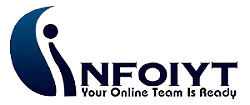Making a well-organized board meeting agenda is a vital aspect of conducting productive meetings. The agenda for the board meeting sets the tone and ensures that the board meets their goals.
It is crucial to learn the best practices for agenda planning regardless of whether you’re an administrator or a board member. This will help you to conduct an effective meeting. This article will assist you in avoiding the most common pitfalls that can derail the effectiveness of a board meeting.
Discussing Too Many Themes
Too many topics are addressed in a meeting that result in rushed discussions and an insufficient amount of time for each https://learnboardroom.com/what-is-the-difference-between-donor-management-software-and-membership-management-software/ topic. This reduces the effectiveness of the meeting. To avoid this, choose only a few high-priority items that are relevant to the meeting’s goals. If necessary, delay more urgent issues to subsequent meetings or assign them to the committee for further study.
Insufficient Board Participation
By ignoring the viewpoints of board members, it can be difficult to arrive at well-rounded decisions. A good agenda encourages participation by identifying all the stakeholders in every discussion, and allowing the same amount of time to speak, preventing any one person from dominating the conversation.
Lack of documentation
Without clear guidelines on how to prepare for the board meeting, it can be a breeze for board members to arrive without a plan. A board agenda should include all relevant documents, like previous minutes of meetings reports, minutes, and proposals and arrange them chronologically to support productive discussion. These documents should be distributed to board members in advance, and available on their portal to board members for review prior to the meeting.





